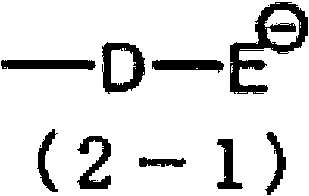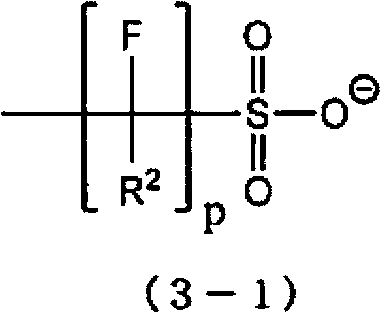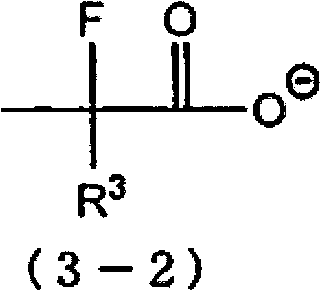Silicon compound, condensation product, resist compostion and pattern formation method
A technology of silicon compounds and carbon atoms, which is applied in the field of new silicon compounds and can solve unestablished problems
- Summary
- Abstract
- Description
- Claims
- Application Information
AI Technical Summary
Problems solved by technology
Method used
Image
Examples
Embodiment 1
[0329] Embodiment 1 (synthesis of condensate (1))
[0330]Take a total of 30g of alkoxysilane, 150g of isopropanol and water 110g as a solvent, and 0.10g of acetic acid as a hydrolysis catalyst in a three-necked flask with stirring blades and a reflux device. The feeding ratio is as follows: the aforementioned alkoxysilane (1) is 5 mol%, tetraethoxysilane (hereinafter referred to as TEO S) is 10 mol%, PhSi(OEt) 3 is 55 mol% and Me 2 Si(OEt) 2 is 30 mol%.
[0331] Next, these reaction systems in the three-necked flask were heated to 90° C. to perform hydrolysis and condensation reactions. After 3 hours, the reaction solution was returned to room temperature, and 200ml of isopropyl ether and 200ml of water were added to the three-necked flask. After stirring, the upper layer of the reaction solution that had been separated into two layers was recovered, and 200ml was used for washing three times. Next, after dehydration was performed by adding magnesium sulfate, the solvent ...
Embodiment 2~15
[0332] Embodiment 2~15 (synthesis of condensate (2)~(15))
[0333] In the same steps as in Example 1, alkoxysilanes (1)-(5) and other alkoxysilanes containing hydrolyzed groups and photoacid generating groups were hydrolyzed and condensed to obtain condensates (2)-(15 ). Table 1 shows the measurement results of the charging ratio (molar ratio) and the weight average molecular weight (Mw) of the alkoxysilanes used.
[0334] [Table 1]
[0335]
PUM
| Property | Measurement | Unit |
|---|---|---|
| refractive index | aaaaa | aaaaa |
Abstract
Description
Claims
Application Information
 Login to View More
Login to View More - R&D
- Intellectual Property
- Life Sciences
- Materials
- Tech Scout
- Unparalleled Data Quality
- Higher Quality Content
- 60% Fewer Hallucinations
Browse by: Latest US Patents, China's latest patents, Technical Efficacy Thesaurus, Application Domain, Technology Topic, Popular Technical Reports.
© 2025 PatSnap. All rights reserved.Legal|Privacy policy|Modern Slavery Act Transparency Statement|Sitemap|About US| Contact US: help@patsnap.com



